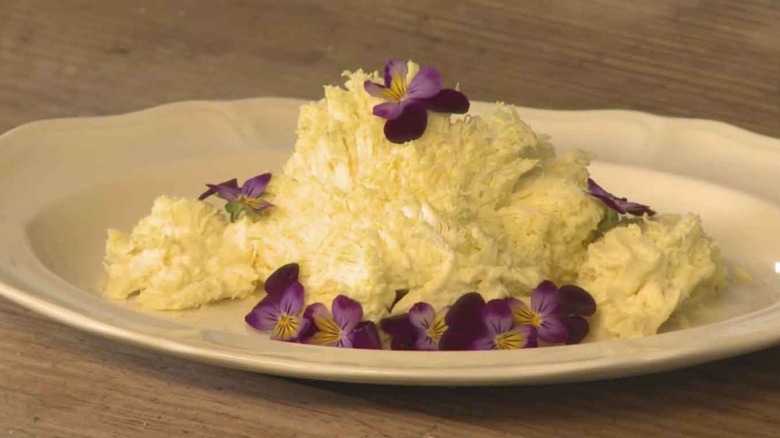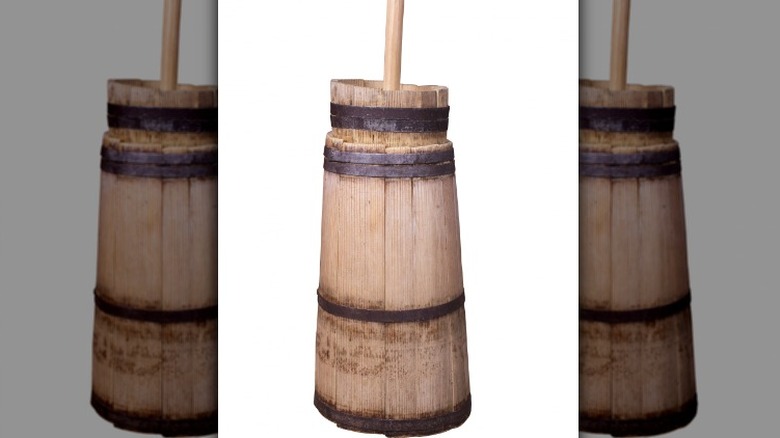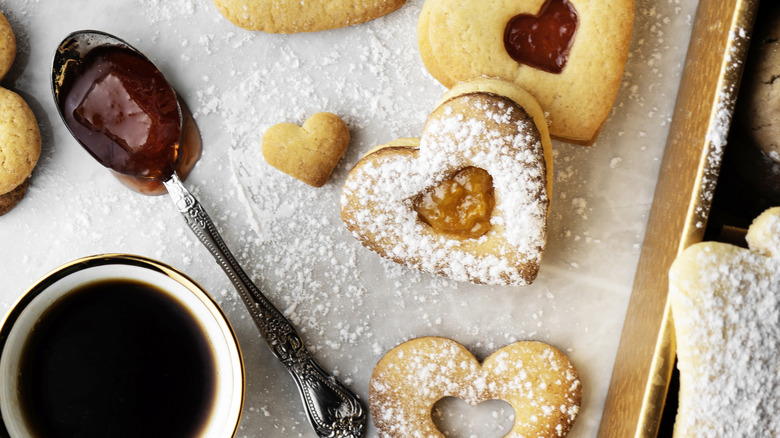Before Butter Boards, Colonial Americans Made Fairy Butter
Trendy Instagram-worthy foods might seem like an invention of the modern digital age. In fact, one unforgettable Tik Tok trend of 2022 was the butter board, a weird combination of a charcuterie platter and a ton of butter. Presentation has always been the key to a great meal though, and even in the days before social media, folks were always striving to imitate the influencers of their day. One of the best examples of this is the unique food known as fairy butter.
As Atlas Obscura points out, fairy butter can be traced back to the 18th century when America was still a fledgling country. While most folks already knew how to bake bread or whip up an easy soup or stew, if they wanted to try and eat like royalty, they would have to turn to cookbooks and recipes for items like fairy butter.
Fairy butter is a type of compound butter that is made by combining the butter with hardboiled egg yolks, sugar, and rose or orange water. Its flavor is similar to a less sweet buttercream frosting with additional aromatics. In its heyday, it was typically served alongside cookies, gingerbread, and cakes as a special treat.
Fairy butter's 'super'-natural inspiration
One of fairy butter's unique qualities is that it is served by pushing it through a fine mesh sieve or strainer. This process creates fine, thin strands of butter that stand on their own on a plate. Once all the butter has been pushed through, it is arranged to resemble the fungus that allegedly gave the butter its name.
The name fairy butter was originally used in Europe in reference to the jelly fungus known as Tremmela auranta. The myths go that this particular bright orange fungus was often tampered with by fairies and burned in fires to ward off evil spirits. Many olden-day butter churners would go so far as to sprinkle holy water above their churn to prevent fairies from meddling in the butter-making process.
Once the butter has been pushed through the sieve it does tend to resemble a growing fungal colony — in a good way, of course — and makes for a far more appetizing snack than the mostly flavorless funghi it is named after.
How to make fairy butter
As one would expect from a recipe popular among pioneering early Americans, the recipe for fairy butter is fairly simple to follow.
Colonial Williamsburg instructs that the first step is to cook up two hard-boiled eggs. Once they've cooled, separate the yolks and transfer them to a bowl. Mash the yolks into a fine paste before adding 1 tablespoon of orange or rose water along with 2 teaspoons of sugar. Cream the ingredients together, and then add ½ pound of softened butter. Continue mixing until a uniform paste is formed. Lastly, push the butter through a sieve onto a plate. It can then be decorated with edible flowers for an elevated presentation.
Once you've whipped up your very own fairy butter, you can follow in the footsteps of first lady Dolley Madison – who was a fan of the treat — by serving it up with gingerbread cookies and tea. It can also be paired with any other sweet treat, or simply bread, for a variation on the once-classic dish.


